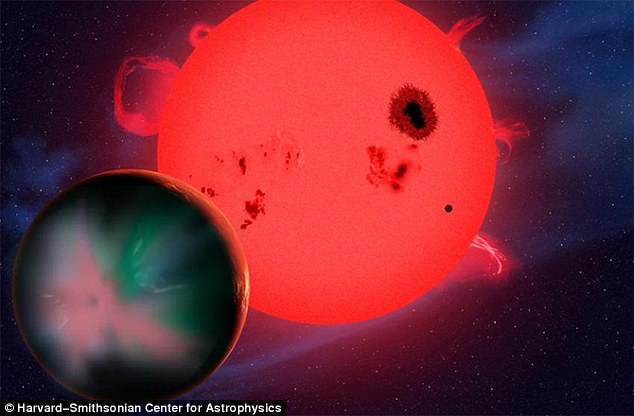News about maps
Digital cartography and GPS navigation
Mapstor news
This Day in History
Travelling with mapstor.com
Digital cartography and GPS navigation
115 years of flight
Next-generation of GPS satellites are headed to space
DJI Phantom 4 RTK - cartography of a new generation
Earthquake prediction systems
OneSoil map
The most Earth-like planet is probably not suitable for life

Astronomers from the University of Warwick gave a disappointing outlook on the planet Kepler-438b, which is considered to be the most similar to Earth exoplanets discovered up to now. Periodic powerful coronal mass ejections from the - the star around which the planet gravitates- could completely destroy the atmosphere.
It turned out that the star Kepler-438, a red dwarf, just a few times in a hundred days, emits a powerful flash of intensity exceeding the strongest solar flares by times. And the atmosphere is not directly affected by them, but by coronal mass ejections. These are massive gas emissions and electromagnetic radiation from the star crown, which bring strong perturbations in the magnetic field of the star. After a fast-moving solar flare plasma from the star rushes in the space (consisting mostly of electrons and protons).
The most Earth-like planets Kepler-438b is called according to the Earth Similarity Index (Earth Similarity Index, ESI). These index shows the probability of conditions on the planet suitable for life, based on several factors of its physical resemblance to Earth: the size, mass, density, distance from the star and the temperature on the planet. The Earth, has the index number - one, Kepler-438b has 0.88. Next in the list of the planets - Kepler-296 has 0.85.
Strong flash of the star, among other things, lead to the exposure of the planet Kepler-438b by ultraviolet and X-ray radiation, which is also bad for its capacity to sustain usual for us forms of life.
Besides Earth Similarity Index, there are other methods of ranking exoplanets on opportunity to sustain life - for example, the index of habitability of transit planets.
Digital cartography and GPS navigation 14-11-2015


